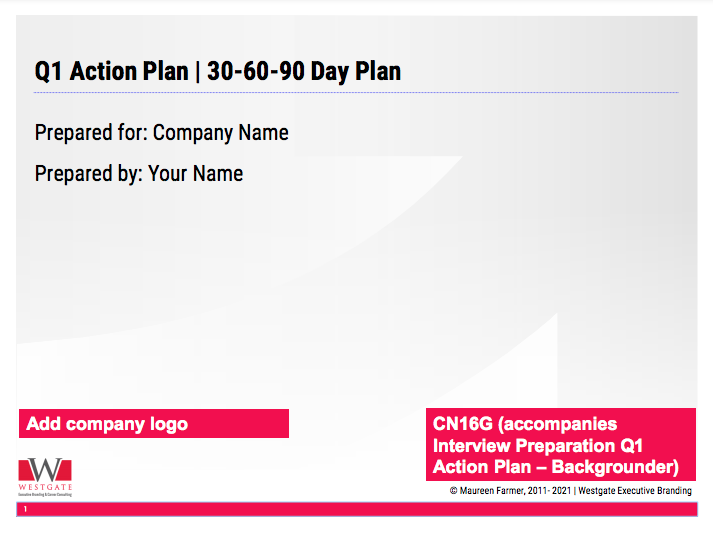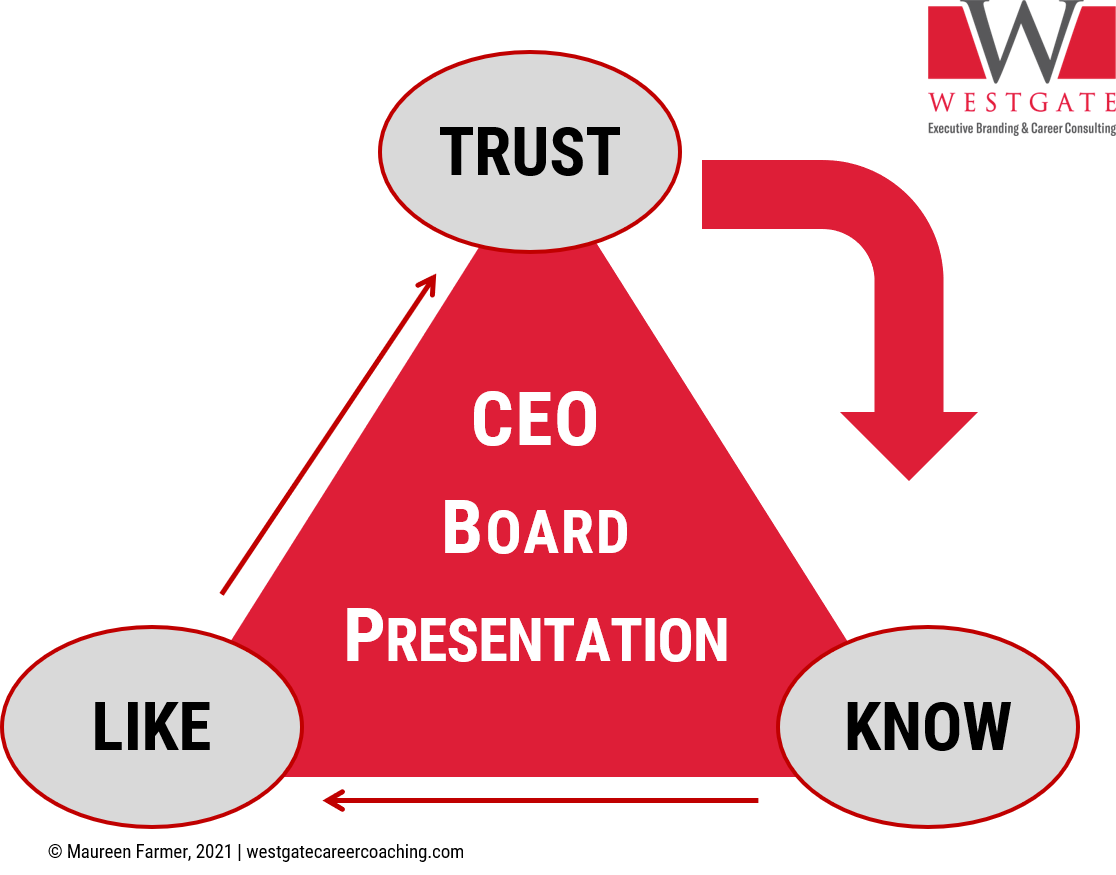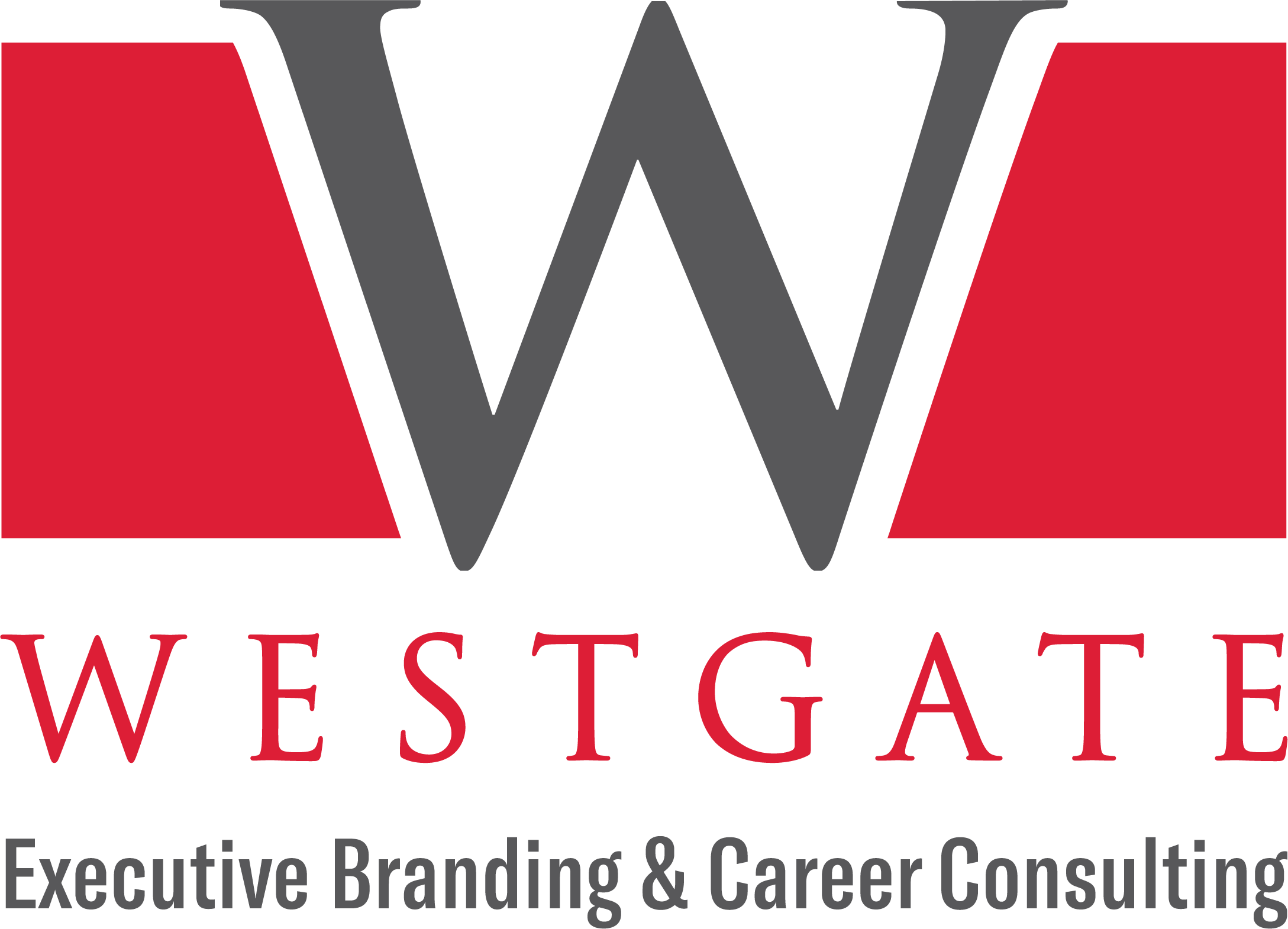Whether you’re pitching to the board of a private equity group or the board of a publicly traded company, your performance during the presentation will predict whether you are awarded the offer. As in business negotiations, the most powerful strategy for winning the deal is thorough preparation and a clear understanding of your audience. Our 90-day business plan presentation will help you seal the deal and position you as the candidate of choice.

What is a 90-day business plan?
The 90-Day Business Plan is a business performance tool that puts you in control of your first 90-days as the CEO (and beyond) and give you confidence as you execute on your plan.
It is most often used in corporations but can be utilized for private equity investor pitches, investment banking pitches, or philanthropic audiences. This article focuses on the mid-cap publicly traded organization, but the principles may be applied across business structures, industries, and markets.
During the first 90 days on the job, all eyes will be upon you—from the board of directors, investors, shareholders, Wall Street (and other regulators), your new team, your employees, and your customers will be watching, waiting, and wondering what your first steps will be.
There’s a lot at stake but you can take control of that experience with a 90-day plan presentation. The presentation is similar to a Swiss army knife in that it can be used in multiple situations:
- As a board of director or CEO job interview presentation
- An exit strategy from your current CEO role, business, or board role
- To execute your business plans for the first 90 days in a new role
- To keep track of your ongoing business performance year round
- When you’re pitching to a private equity company for investors
This article discusses the board of director or CEO job interview presentation for mid-cap corporations.

For the CEO or board of director job interview presentation
As a CEO candidate, you will likely be asked to deliver a presentation to the board—a very common practice used to evaluate your presentation skills, assess your organizational fit, and test your confidence. Your credentials are certainly critical, your education, your competencies and so forth. By the time you progress to the board presentation and interview, you can be assured your credentials are no longer in question. The question will be fit with the board, committee chairs, the senior management team, and employees.
Sometimes the board will leave the topic of the presentation to the CEO candidate to decide and there is no more appropriate presentation to prepare than the 90-day business implementation plan. This will accomplish several outcomes, including serving as your onboarding plan for your new role, while also demonstrating your business acumen.
Your fit will be assessed during the presentation. At this level, the selection process is now an exercise in risk mitigation because hiring a new CEO is a significant liability for the corporation. The wrong hire can have a ripple effect across the entire business ecosystem and marketplace. The organization’s brand and solid reputation are at stake.
You must approach this presentation from the point of view of the corporation. Corporations do not exist to provide jobs or board opportunities to executives. Organizations exist to offer a product or service to the marketplace, and this is where your planning must begin. Your value proposition needs to be crystal clear, and you will need to articulate your ability to (1) make money (2) save money and (3) solve a problem for the organization to support its shareholders, employees, and its customers.
Due diligence for the business plan
When creating the 90-day plan begin with the organization’s strategic plan to understand the overall direction. This is only the beginning. Conduct your primary research by exploring the company’s products and services. Purchase a product or service and become their customer. Understand the products’ features, benefits, and limitations.
Engage with the organization’s people—you can approach the sales team as a secret shopper and undertake the customer journey. Don’t stop there—contact the organization’s customer service center, the investor relations department, the sales department. Examine every aspect of the organization’s ecosystem to understand what their customers experience. Understand the key problem you’re expected to solve as the CEO or board member.
Comb through online assessments and access organizations and product review sites. What are employees saying? What is the organization’s net promotor score (NPS). Set a Google Alert to gain timely information on the organization when they are mentioned in the news and across the Internet.

Satisfy the corporation’s buying motivators (make money, save money, solve a problem)
Your motivations will be scrutinized during the selection process. Your business plan presentation must address your reason for wanting to join this organization and therefore your reason must be authentic and compelling. You must tie your motivations with their buying motivators (make money, save money or solve a problem). If you have a uniquely specific perspective about the organization or the industry, don’t bury the lead. You must showcase the information early in the presentation.
For example, if you’re a turnaround expert for mid-cap companies with expertise in data security, you can lead with this differentiator. Your research has determined the corporation is at risk for a ransomware attack (because you’ve done your due diligence and research) you can tie your solution to their pain point.
Your presentation must also address the multiple perspectives of the board or the senior leadership team, depending on your audience. Your knowledge and expertise across functions, such as legal, product development, operations, customer service, marketing, sales, manufacturing, and so on will relay to the audience that you understand their specific challenges. The CFO, CRO, CLO will have their unique perspectives on your candidacy and will need to know that you understand their specific business unit’s needs. You must address each business unit leaders’ own buying motivators.
The know-like-trust factor
The presentation serves as a catalyst for trust. Everyone has a stake in your appointment to the board or CEO role because the stakes are high. Bay Street and Wall Street are watching carefully. Investors need to feel they can trust you. Facts tell, but stories sell, and when you approach the presentation with powerful signature stories that demonstrate your past performance coupled with your motivation and drive to do the job well, you will crystalize the trust.
The majority of candidates do not prepare thoroughly enough for interviews. Many candidates approach the process from a personal point of view which is a mis-step because it feels self-serving to the decision-makers, which immediately raises suspicion. Given that 78% of candidates deliberately mislead their credentials on their CVs (source), your challenge will be to demonstrate your trustworthiness during this pivotal presentation.
You must approach the presentation from their point of view. Take a consultative approach to the presentation and engage them in conversation during the presentation, which will engender the positive neurotransmitters of trust (oxytocin, dopamine, and serotonin). Anticipate the questions you may be asked.
Always include your professional head shot (including a smile) in your presentation. Your goal is to become memorable and ensure your image is clearly connected with your name among the senior management team and the board.

Key player positioning
Positioning yourself as a key problem solver to the board in terms they cannot resist will help to improve the know-like-trust factor. Do this by understanding the metrics involved in the organization and using their language to demonstrate your understanding of their business. Know their customers, their vendors, and their pain points. Your preparation will be appreciated because it demonstrates your motivation to join the organization and become an ambassador and champion for their products and services.
Your signature story can be used to frame the presentation and you can punctuate the presentation with a case study which you can present during the interview or tuck it behind the presentation for later consideration and review by the board.
Metrics & performance
Careful review of the organization’s key metrics (historical and current) will be key as you prepare your presentation. Use language they use in their written materials. You can uncover this language by carefully reviewing their prospectuses and submissions to their specific stock market. There is no excuse for not knowing key metrics with the plethora of information publicly available on the Internet. Take it a step further and hire a resource to uncover information that is not as easily available, such as a librarian or financial analyst with expertise in the particular market and industry. This will be especially helpful if you’re interviewing for a CEO opportunity in a new industry. You must demonstrate the transferability of knowledge, networks, and solutions across the divide.
Quarterly analysts' calls will also serve as an excellent resource for the CEO candidate where challenges, forecasts, and plans will be discussed in detail.

The competitors’ metrics
A complete environmental scan of the industry and marketplace will be a handy companion to the metrics you’ve gathered on your mid-cap corporation job interview presentation. As the CEO your job is to thoroughly understand the factors that impact the marketplace from a macro and micro-economic point of view. Understand your organization’s position in the market—understand your organization’s competitors as well. Don’t worry the board will be offended or bristle at your bold research. You will certainly make a statement to the board when you’re able to showcase market intelligence they may not be privy to. And you’ve demonstrated your position as a master researcher and problem solver when you present them with information they can use immediately. You will be memorable.
Key customer lists
Demonstrating your knowledge of the organization’s key customers is another area I seldom see CEO candidates addressing in a job interview. I believe CEO candidates have a great deal of information and emotions to manage during the selection process—a human need to please and impress the decision-makers. However, taking a purely business approach is a stronger strategy. When you can demonstrate your knowledge of and potential relationships you own with their key customers, you’ve then catapulted yourself from the know and like level to the trust level.
If you own specific intelligence regarding their customers, you become much more valuable to the board of directors than your competitors. Preparation is key and your ability to prepare for this presentation will predict the outcome. “Don’t wish for it, work for it” is an adage that is wholly applicable and achievable in your quest to land your first or next CEO role with a publicly traded mid-cap organization.
Monthly tracking and quarterly reporting
Monthly tracking and quarterly reporting will help keep you on track during your first 90 days. The 90-day plan now becomes your implementation plan so really, you’re demonstrating during the interview you already have your training, onboarding, and implementation plan already prepared. The plan will serve as a mechanism to keep you and your team on track.
Assumptions
When preparing the plan, you will need to make assumptions and making assumptions is appropriate. Many candidates are concerned about doing so. As long as the assumptions are clearly stated as so, the board will understand you are not privy to confidential key business assumptions and strategies.
Market visibility
Beyond the obvious benefits of managing your personal brand inside the organization (your presence, messaging, and reputation), you will also use the plan to create your new signature stories which are the new achievements you deliver to the marketplace beyond the first 90 days.
Your signature stories will be welcome by the media when you’re able to report your key successes with customers and employees alike. Most CEOs do a fabulous job of creating value internally and externally for investors, but few take the time or effort to work on their brand outside the organization.
Failing to communicate your achievements externally will have a significant opportunity cost for yourself personally and for your organization overall. Engaging with media outlets, analysts, and other trumpeters will build your personal brand equity as the go-to CEO for your area of expertise and help position you for the coveted board of director role you’ve had your eye on for years. Let the marketplace do some of the heavy lifting for you.
Your signature stories will be used for various purposes and the beauty of it all is that you don’t need to fabricate or invent any of it. Your signature stories form part of your brand portfolio you will tell time and again—customized for each new audience and delivered in a way that shows your personality.
The global pandemic has created demand for human connectivity and stories that demonstrate grit and resilience will pique the interest of the audience because it helps us connect at a human level. Signature story development is easy, authentic, and appeals to every audience.
Signature stories are based on your top three to five most proud and significant accomplishments that can be written and expressed in several ways, and it takes the guesswork out of what to focus on in your CV, presentation, bio, or other digital marketing assets.

Consistent, frequent, and transparent communication
Consistent and frequent communication with your stakeholders is critical in order to build on the trust you’ve garnered with the board. Sharing your plans transparently with your constituents will demonstrate your goodwill and motivations. Do not underestimate the importance of sharing wins, losses, and general information that will help your team and the entire organization do their jobs more efficiently.
A CEO we worked with established a practice of publishing a message every Monday morning for his 10,000+ person organization outlining his travels, his plans, and customer meetings (complete with a splash of personality) and it was welcomed by everyone and helped strengthen employee engagement. There was very little ambiguity in the organization because the CEO kept the vision of the company squarely positioned in front of employees, customers, the board, and regulators.
Because there was so little ambiguity, work got done and goals were achieved, and bonuses were paid at stretch. The Monday morning message was a non-negotiable action item and management tool he wrote personally, he never missed a Monday message in his more than seven years with the organization before he split it in two and took one side of the business to an exit by IPO.
He remains one of the most successful and highly compensated CEOs in the industry. When I asked the CEO the secret to his legendary success, his simple reply was “people trust me.”
When you’re delivering your presentation to the board, don’t forget to wear your smile to win the hearts of the board. There is to substitute for authentic human connection especially at the board level.
Be a hero at home and on Wall Street with our CEO Business Plan Presentation Template to land your next CEO opportunity faster.
Westgate Executive Branding & Career Consulting is a family-focused brand helping CEOs level up since 2011. Whether you are a CEO candidate or the CEO of an organization, we would love to welcome you to the Westgate family of success stories.
Schedule a private consultation here: maddison@westgatecareercoaching.com

